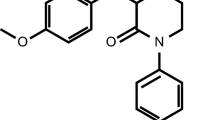Summary
Recent developments in our knowledge of drug binding prompt the questions, in what circumstances are measurements of free levels necessary, desirable or not warranted? Free level monitoring should be considered for drugs for which the usefulness of plasma level monitoring has been established, drugs which are highly bound to plasma proteins, and which exhibit a variable free fraction. In terms of drug distribution, free drug concentration is independent of free fraction, while total concentration is a resultant of free concentration and free fraction. For drugs with a low extraction ratio, the total concentration at steady-state depends upon free fraction; but the free concentration is independent of free fraction. With high extraction ratio drugs, the free concentration is dependent upon free fraction but only after parenteral administration.
There are numerous examples of drugs which are highly bound and exhibit large variations in free fraction. Free fraction may increase with drug concentration. Pathophysiological changes in the binding ligands, albumin and α1-acid glycoprotein, as well as changes in the concentration of endogenous compounds which compete for binding sites, may also cause changes in free drug fraction. Binding interactions resulting from poly-therapy may also result in a variable free fraction.
Ultrafiltration devices now enable the convenient and accurate determination of free drug levels. Areas in which this should prove useful are investigations of concentration-effect relationships and clinical situations requiring intensive monitoring where binding changes are suspected.
Similar content being viewed by others
References
Albani, F.; Riva, R.; Procaccianti, G.; Baruzzi, A. and Perucca, E.: Free fraction of valproic acid: In vitro time-dependent increase and correlation with free fatty acid concentration in human plasma and serum. Epilepsia 24: 65–74 (1983).
Alvan, G.; Bergman, U. and Gustafsson, L.L.: High unbound fraction of salicylate in plasma during intoxication. British Journal of Clinical Pharmacology 11: 625–626 (1981).
Behm, H.L. and Wagner, J.G.: Errors in interpretation of data from equilibrium dialysis protein binding experiments. Research Communications in Chemical Pathological Pharmacology 26: 145–160 (1979).
Blaschke, T.F.: Protein binding and kinetics of drugs in liver disease; in Gibaldi and Prescott (Eds) Handbook of Clinical.
Author information
Authors and Affiliations
Rights and permissions
About this article
Cite this article
Levy, R.H., Moreland, T.A. Rationale for Monitoring Free Drug Levels. Clin Pharmacokinet 9 (Suppl 1), 1–9 (1984). https://doi.org/10.2165/00003088-198400091-00001
Published:
Issue Date:
DOI: https://doi.org/10.2165/00003088-198400091-00001




